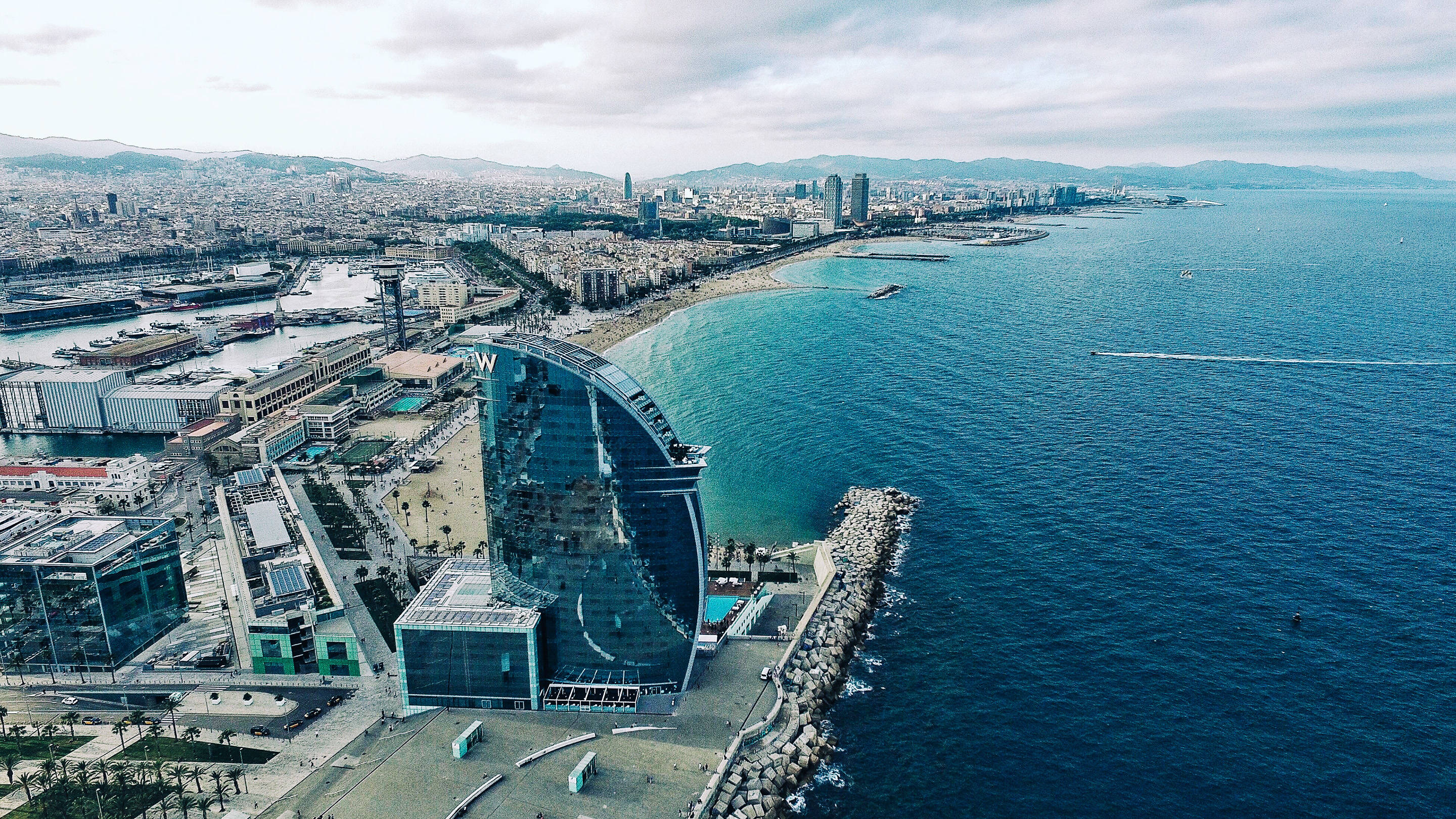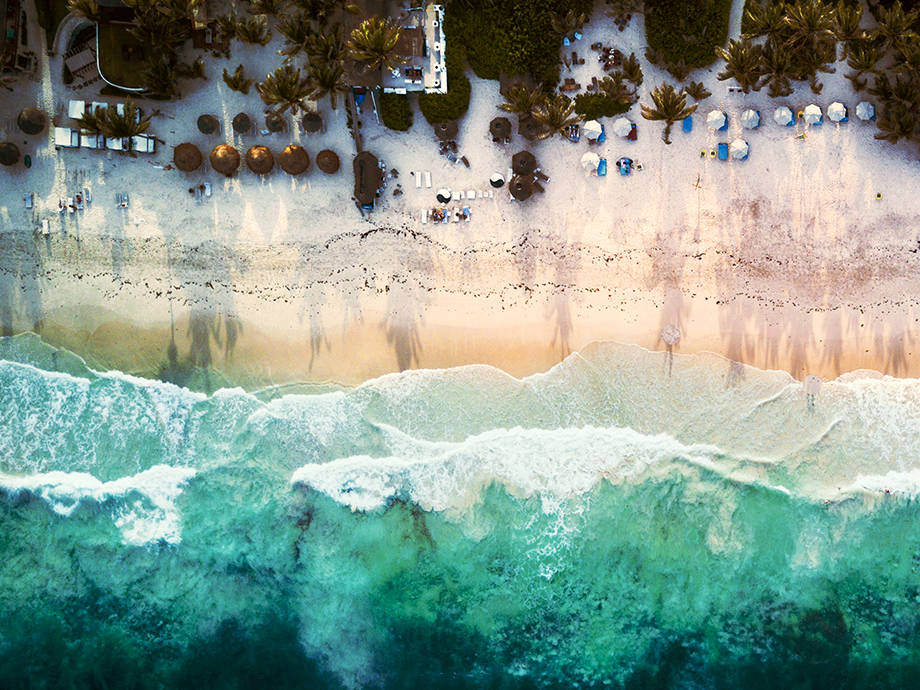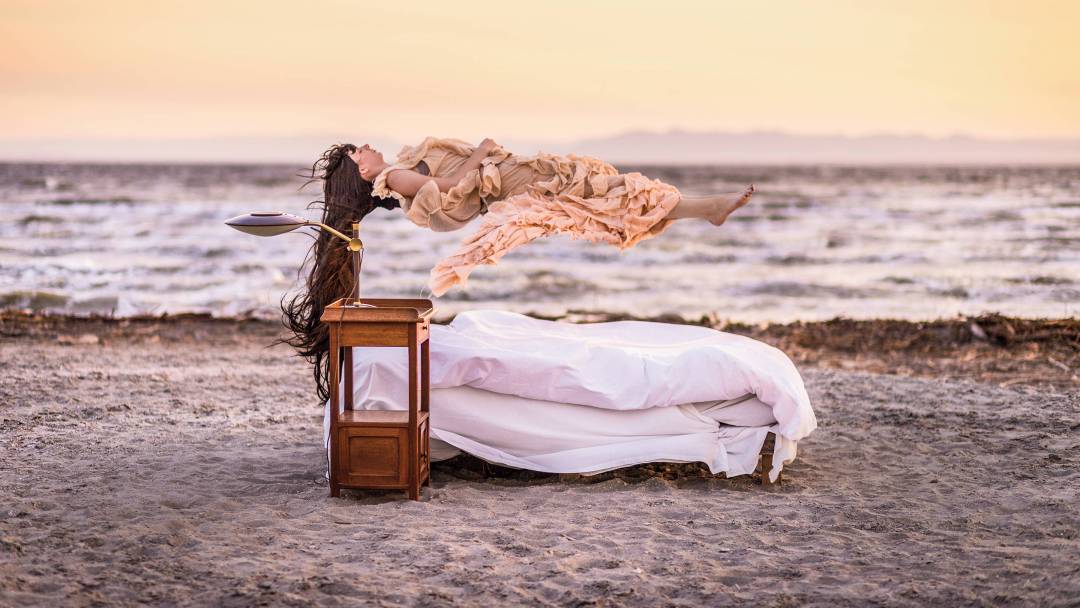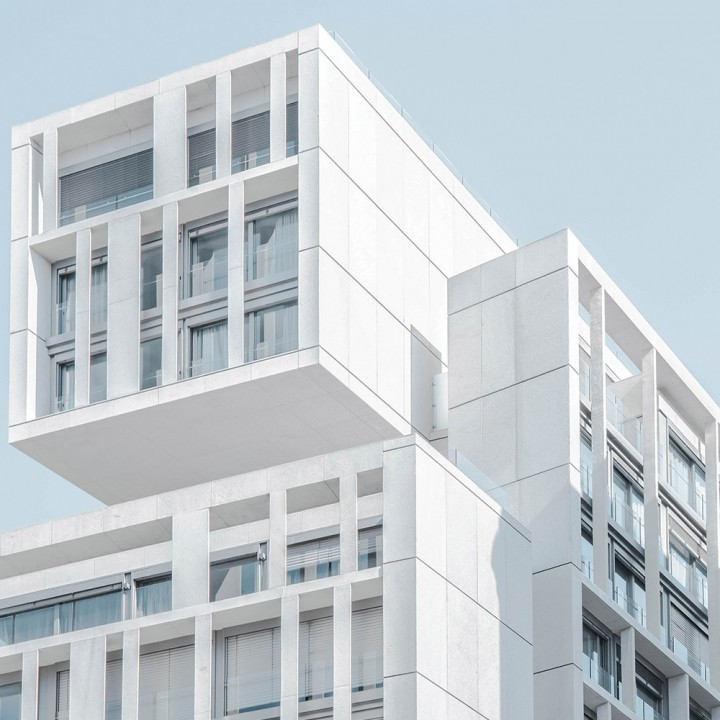
This is What Newfound Freedom Looks Like
A layer of white smoke waves over the crowd, along with hand-painted banners, Catalan flags, and a shower of sparks from a sputtering flare. “Ni oblit,” the people shouted, hoisting clenched fists and small children above their heads, “Ni perdò.” Neither forgotten, nor forgiven.
On a sunny day in late September, civilians hurled paint at black-clad police, spattering their riot shields with cheerful color. At the corner store, where I buy fresh figs and bottles of sweet vermouth, the cashier weighed in on the topic as she handed me change. “We’re Catalan, not Spanish—that’s why they don’t want to let us vote. They’re afraid of what we’ll say,” she explained. I’d come of age with stories of the Spanish civil war looming large in my imagination: street battles between fascists, communists, and anarchists; the terror of Picasso’s Guernica; Ernest Hemingway and George Orwell drinking wine with Republican soldiers.
So when the protests calmed, I hopped a train for Barcelona, where Orwell arrived on his way to the front in 1936. Following his footsteps across the Plaza de Catalunya, I tried to imagine the worker-led society he’d found there, amid a tossed salad of syndicates and militias. Buildings were draped with the red flags of Communism or the Anarchists’ black-and-red, and revolutionary songs played over loudspeakers. The militias were fighting to preserve Spain’s Second Republic, a democratic government established in 1931. As they marched, they sang the ominous, plodding lines of Els Segadors, an anthem that had been ringing in the streets since my own arrival in Catalonia: “Strike with your sickles, defenders of the land,” they chanted, “When the time calls we cut off chains.”
Stepping past the yawning, sinuous facade is a dive into a sunlit sea: every line undulates and the very structure of the building evokes the twisting bones of some mysterious underwater creature.
Among the signs calling for independence and democracy are hand-painted banners protesting the rising cost of living in the city, and the way that large-scale landlords on Airbnb have emptied popular neighborhoods by turning homes into short-term rentals. But when I ask Catalans about the origins of the independence movement, they point farther back in time. I met a young Catalan who explained the situation: “The Bourbons—you know, the French—captured the city of Barcelona in 1714, and we’ve been under foreign rule ever since.” (Sure enough, research agrees that Spain’s current King Felipe VI is descended from the House of Bourbon, which turns out to be a royal lineage, not some sticky-floored blues bar in Kentucky.)
So from the Plaça de Catalunya, I headed to the Born Cultural Center, a former city market where excavations have revealed preserved streets and houses that predate the Bourbon invasion. Alongside a collection of broken crockery and wine glasses, starry-eyed displays describe the scene as a paradise of happy artisans who spent their days tending organic gardens and dancing in the streets.
Until recently, the Born Cultural Center made their thesis clear with a wistful slogan, that after 1714, “nothing was ever the same.” In the years following the fall of Barcelona, buildings were demolished to make room for an imposing military fortress, resistance leaders were executed, the five Catalan universities were closed, and Spanish was forcibly imposed as the language of public life. When the Bourbons arrived, Catalonia was already under the rule of the Austrian Hapsburgs.
It was far from being an independent state, but compared with repression under the Bourbons—an injustice that was echoed centuries later by Franco’s harsh rule from Madrid—it seems like a sunny alternative. A short walk away at the Museum of Catalan History, the origin story starts even earlier. Before I reach the dioramas and exhibits on the pre-history of what’s now Catalonia, I pass a line of defiant quotes emblazoned on printer paper. Gandhi, Pablo Neruda, and Robert Kennedy seemed to be weighing on in on the bravery of the hunter-gatherers in the next room. “Disobedience is the true foundation of liberty,” admonished Henry David Thoreau in looming Times New Roman font. “The obedient must be slaves.”
Baja California Sur: Travel the Eco-Conscious Way
Playboy goes on a journey to the beaches for kayaking and a reminder of our affect on the planet

Listening to the strains of Els Segadors and recordings of impassioned speeches, I’m primed for the next round of inspirational quotes. “Without independence,” said the Catalan architect Antoni Gaudí in a bolded Arial font, “there is no possibility of creating in Catalonia a politics that’s just, honest and regenerated.” It’s a fitting close to my day in Barcelona’s Catalan museums, where a thread of nostalgia ran through the careful scholarship, seeming to reimagine the past as a way to imagine a transformed future. And who could have imagined a stranger, more eccentric future than Antoni Gaudí? The architect has become an emblem of the city, but his most famous works remain audaciously weird—a century-old look into a future that never came to pass.
As the sun sets over the city’s low skyline, I walk the wide Passeig de Gracia to Casa Batlló, an apartment building that Gaudí created in 1904. Stepping past the yawning, sinuous facade is a dive into a sunlit sea: every line undulates and the very structure of the building evokes the twisting bones of some mysterious underwater creature. Despite their strangeness, Gaudí’s designs are comfortingly human, with handles that curve around my fingers, bannisters that slip smoothly under my palms and clever jokes hidden among the careful artwork.
More than 100 years ago, Antoni Gaudí and his fellow Catalan modernists were creating art and architecture that overflow with hope that science, technology, and changing ideas could overhaul the world. Thirteen years after Gaudí died, Spain began decades of suffocation under Franco’s rule, and the sensual coil of modernism gave way to totalitarian architecture’s cold right angles and imposing facades.
But no one comes to Catalonia to see fascist monuments—like everyone else, I’m here for Gaudí, and one of Barcelona’s must-see stops is his famously unfinished cathedral, Sagrada Familia. It’s a taunting, many-spired sprawl of statues, hidden words and asymmetries. The ongoing construction has outlasted Franco by decades, and dangling from the center of the facade is a massive Catalan flag in defiant red and gold. It’s a reminder that even though Catalonia’s sudden surge towards independence came as a surprise to some foreign observers, for many in Catalonia, it’s an unfinished project that predated fascism and never went away. Because in the fall of 2018 those historic colors are everywhere: flags hang from windows on every street, and it seems that all of Catalonia is decked in the yellow ribbons, streamers, and bows that symbolize support for independence.
In the Catalan stronghold of Girona, where I live, ribbons spread like kudzu vines, a creeping mass of foliage that grows thicker as the October first anniversary of the referendum approaches. When I wake on the first day of October, it’s as if I’ve slept through the busy handiwork of the world’s most revolutionary homecoming committee. Bridges twinkle in bright yellow, stapled twists of ribbon to the sycamore trees, pompoms adorn the iron lamps. And hanging over the river is a brilliant yellow sign in the precise hue of the city’s blooming decor. “You can cut all the flowers,” it said, “but you can’t stop the spring.”






